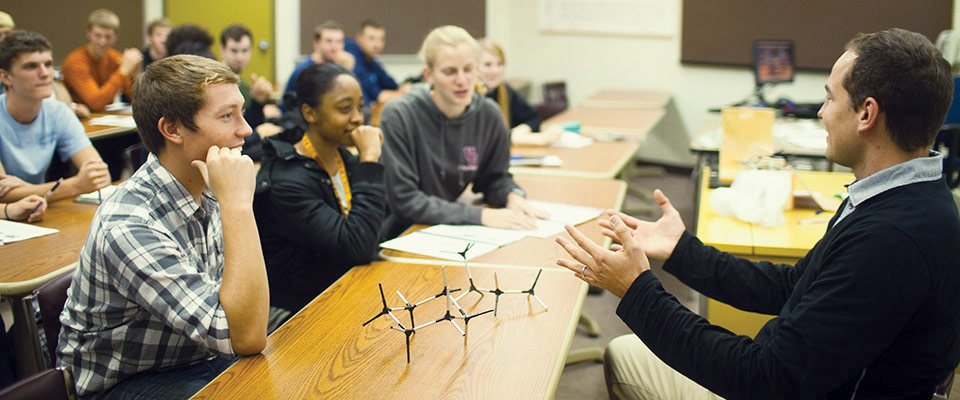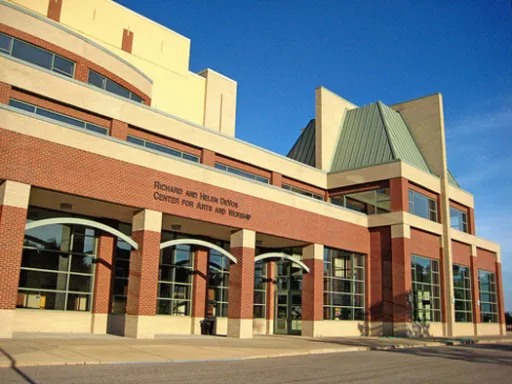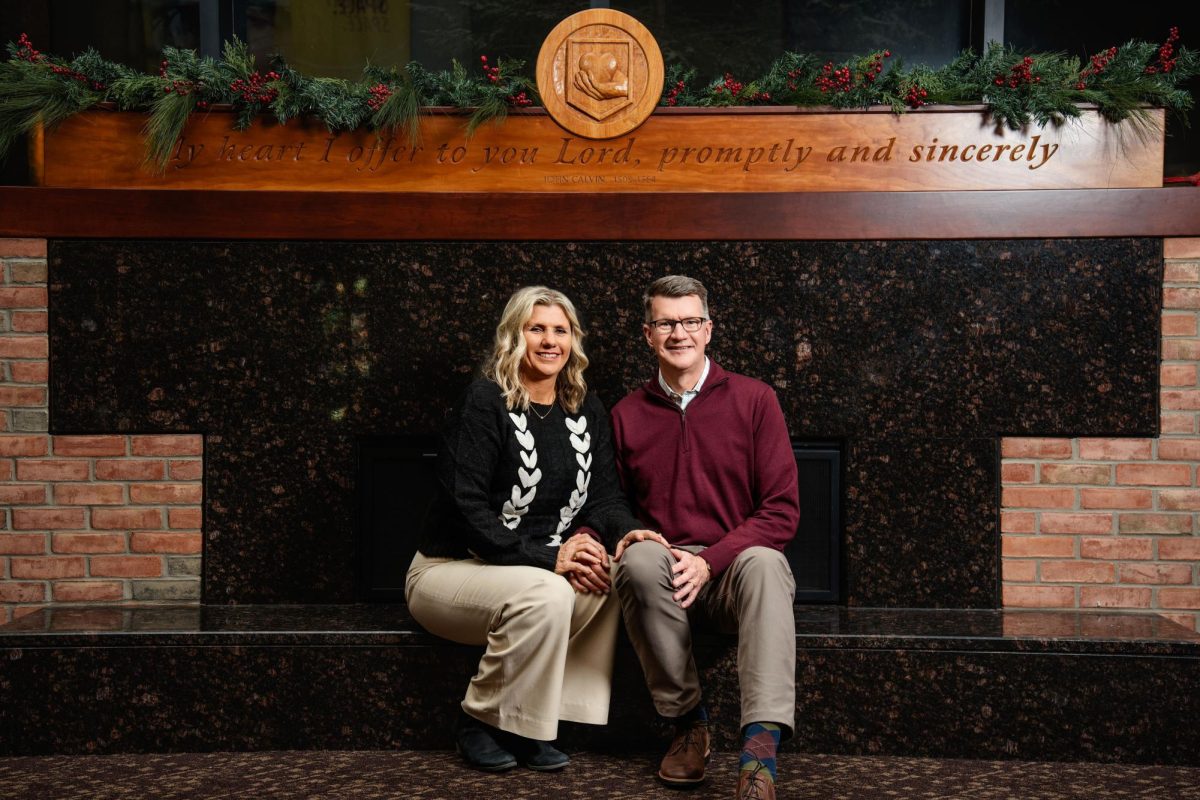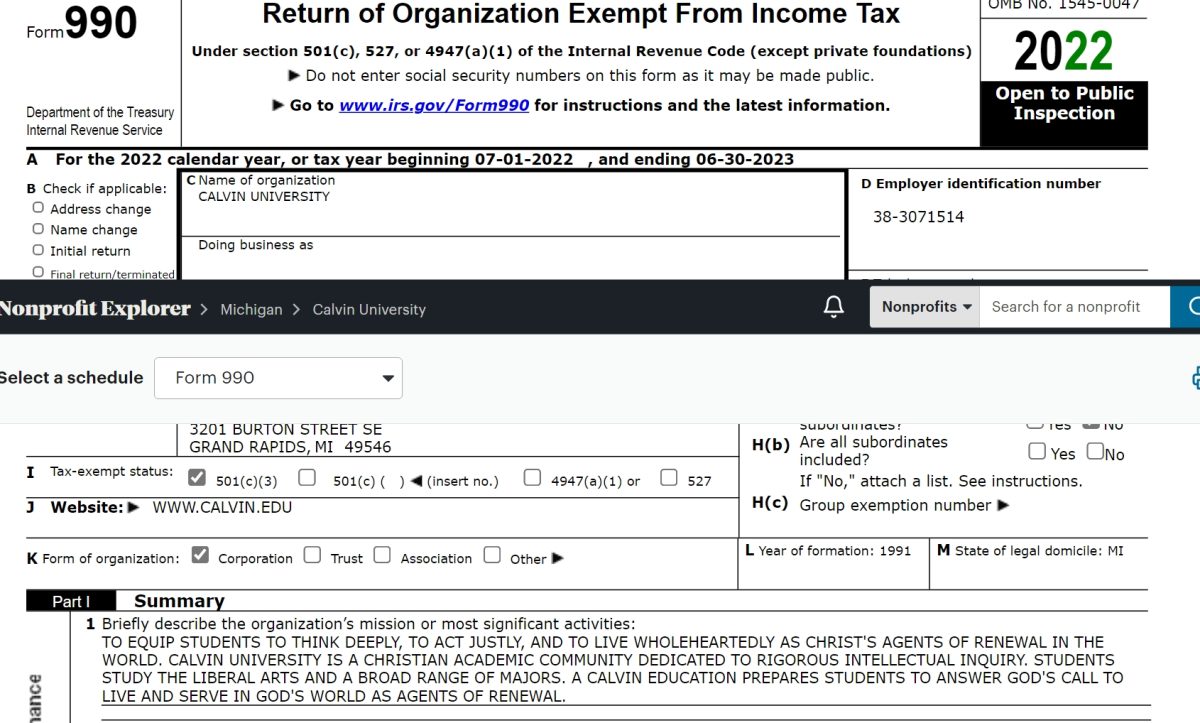After stumbling onto a LinkedIn post about Calvin’s new Master of Arts in Teaching (MAT) program in her senior year job search, Maaike Reitsma — who graduated from Calvin in spring 2023 with Spanish and PPE degrees — was intrigued. “It’s a one-year program, making it low stakes and affordable,” she said, and the other avenues she was looking to pursue would require more schooling. She decided to apply.
Reitsma is now one of the first two students in Calvin’s new Master of Teaching program, which aims to provide a one-year degree program for individuals looking to start a career in teaching or switch to a career in teaching.
In the last year, Calvin has added a number of graduate programs; the university offers 12 different degree programs, now including the MAT. The program’s creation is one aspect of “a big push” for Calvin to attract more adult students to the university, according to Brian Bolt, dean of the School of Education, while also seeking to help alleviate the current U.S. teacher shortage.
This is not the first time Calvin has had a Master of Arts in Teaching program. The MAT, which began in 1976, was Calvin’s first graduate level degree. As the teaching profession evolved, so did the program, becoming a Master of Education (MEd.) in 2006. Today, Calvin has both.
A Master of Education degree and a MAT degree are quite different, Bolt told Chimes. The first is for current educators looking to grow their educational skill set with concentrations like literacy and curriculum and instruction, while the latter is geared towards those with no education degree or experience.
Erek Kooyman, director of the Master of Arts in Teaching program, “really stand[s] by the program” in part because of his own experiences. Kooyman realized he wanted to work in education after he graduated from college. He attended school part-time while teaching full-time, and then studied full-time for two more years to get a teaching certificate and a master’s degree. In contrast, the MAT program “provides a much quicker path than what I had to go through, and it allows those people that develop an interest in education … to be able to really have a pathway that is, I think, time-efficient [and] cost-effective,” Kooyman told Chimes.
The $9,600 student-teacher stipend offered by the state of Michigan also makes the program more affordable, Bolt and Kooyman told Chimes.
The program is specifically designed to attract students who realized they want to go into education too late to change their major; “We actually anticipate half of the [MAT] class coming from Calvin,” Bolt said. Once a student graduates with a degree — say, in biology — the courses they took during their time as an undergraduate often align with ones secondary education students would take in their subject area. Those courses usually allow individuals to pass the state content or subject area test. The MAT would then provide the sequence of education classes and teaching experience necessary for a teaching certificate and a masters degree, according to Bolt.
This does mean that the MAT degree is only available for individuals looking to go into secondary education or K-12 subjects, like physical education or art, because elementary school teachers must “take a lot of really specific courses, and there’s no way we could offer all of them in one year,” Bolt said.
The MAT is largely a repackaging of several classes Calvin already offers at both undergraduate and graduate levels. “We’re actually pulling from a bunch of resources that we already have…an existing class that gets another student doesn’t cost more to offer that class,” Bolt said, “so we found good ways to sort of map it onto things we’ve already done.” MAT students take summer classes, undergraduate courses with current education students and online graduate-level classes already run by the Master of Education program.
Reitsma’s experience thus far has been positive. Despite initial hesitations, she said, “After just a couple of classes in, I stopped telling myself ‘I’m just trying it out, and if I don’t like it, no problem’ and replaced that with ‘I love this program and am excited about being an educator!’”
Complications about accrediting made it hard to advertise for this year’s cohort, but according to Kooyman, he has “gotten a lot of inquiries this year already from students from other schools and universities.” Over the next couple of years, Bolt hopes to grow the MAT program to about 20 students, which is about the maximum number of individuals the program — as it exists now — can support.








